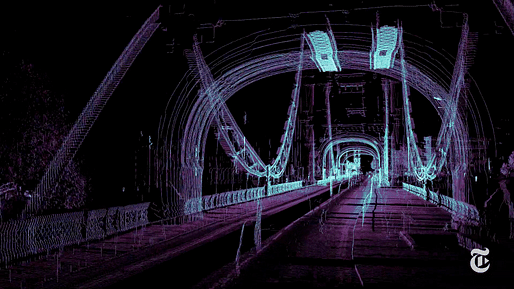

The sensory limitations of these vehicles must be accounted for, Nourbakhsh explained, especially in an urban world filled with complex architectural forms, reflective surfaces, unpredictable weather and temporary construction sites. This means that cities may have to be redesigned, or may simply mutate over time, to accommodate a car’s peculiar way of experiencing the built environment... — Geoff Manaugh on The New York Times
"...The flip side of this example is that, in these brief moments of misinterpretation, a different version of the urban world exists...If we can learn from human misperception, perhaps we can also learn something from the delusions and hallucinations of sensing machines. But what?"
As self-driving cars gradually integrate themselves into urban society, Geoff Manaugh of BLDGBLOG spotlights emerging lidar (light + radar) scanning technologies that the cars use to navigate. He weighs the possible advantages and risks that these technologies — which still have their vulnerabilities — can pose on the built environment.
More recent news about driverless cars on Archinect:
Tokyo's 2020 Olympics won't have Zaha, but it's looking like there will be "Robot Taxi"
Dawn of the self-driving car: testing out Tesla's autopilot function
Milton Keynes invests in driverless cars over public transit infrastructure
No Comments
Block this user
Are you sure you want to block this user and hide all related comments throughout the site?
Archinect
This is your first comment on Archinect. Your comment will be visible once approved.